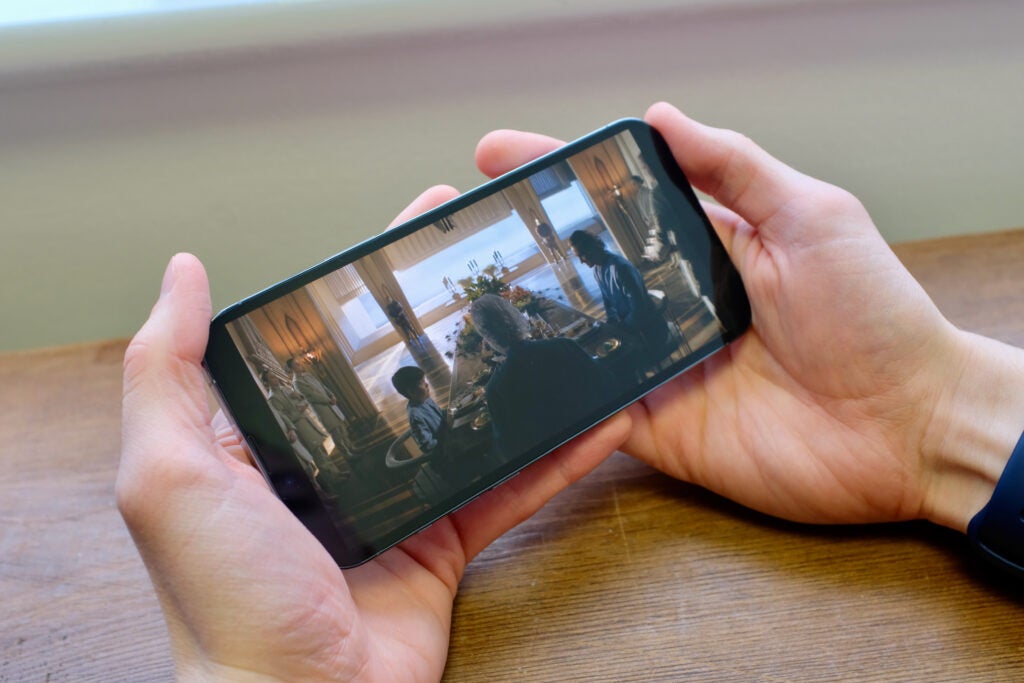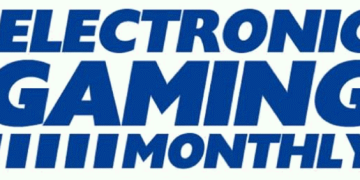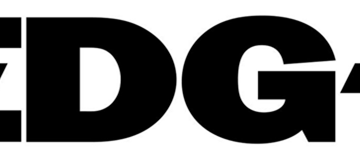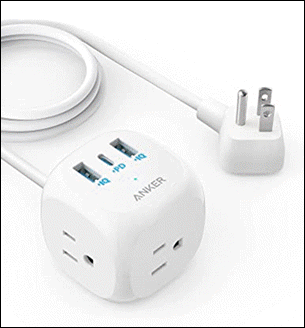Kob Monney
2025-02-07 07:51:00
www.trustedreviews.com
OLED and LCD LED are two of the most common display types that can be found across monitors, TVs, mobile phones, cameras and each one has its advantages and disadvantages.
LED (light-emitting diode) is the most common type of display. If you hear a TV labelled as LCD (liquid crystal display), that’s virtually the same as LED, the LED part refers to the lighting source and not the display itself.
OLED (organic light-emitting diode) is used in high-end flagship TVs as well as mobile devices such as smartphones and tablets.
Which one is better? It depends on what your needs are.
OLED vs LED backlight
LED LCD screens use a backlight to illuminate pixels, while OLED’s pixels produce their own light. OLED’s pixels are referred to as ‘self-emissive’, while LCD tech is ‘transmissive’. What do we mean when we use these words?
With an OLED display an electrical current is passed through the panel to create light through each individual pixel on the screen, and each pixel can be controlled on a pixel-by-pixel basis. It doesn’t require a backlight to create any light – the panel essentially creates its own light – hence the term ‘self emissive’.
With an OLED you can have a pixel that is ‘on’ (as in showing colour) and a pixel that is off (completely black) right next to one another. Add them all up and it creates the image on screen, and because it’s so precise, it doesn’t create the blooming issues that LED panels have.
LED LCD displays can be split into two parts. The LED is the backlight and it shines light into the LCD part. The LCD part can adjust the amount of light that gets through by using zones to control where light appears on the screen. We call it a transmissive display because of the way light is allowed to pass through each section to create an image.
An LED LCD could have dimming zones in the tens or in the thousands, it depends on how big it is and how advanced the screen is. The light from these LEDs is fired through a colour filter of red, green and blue pixels, making up the colours that we see on the screen.
LED TVs hit higher levels of brightness

LED screens can hit higher levels of brightness than OLED and maintain them. That’s a big deal in the TV world, but even more so for smartphones, which are often used outdoors and in bright sunlight. The above image is a Mini LED TV next to an OLED, but you get the idea in terms of their performance difference with regards to brightness in a brightly lit room.
Brightness is measured as ‘nits’ – roughly the light of a candle per square metre. Brightness is important when viewing content in ambient light or sunlight, but also for high dynamic range video. This applies more to TVs, but phones boast credible video performance. Brightness feeds into colour volume, offering a wide range of colours but brightness is only one part of the equation.
The reason to get an LCD TV is before of its higher brightness levels. This makes it a good option if you watch TV in a room with lots of ambient light, as it’ll be able to manage that light and reflections better in a bright room that most OLEDs are capable of.
OLED offers stronger contrast


The other part is contrast. View an LCD screen into a darkened room and you’ll notice that some parts that are meant to be black may look blu-ish. That’s because you can still see the backlighting showing through.
This ‘blooming’ which shows around bright objects on a screen affects a display’s contrast, which is the difference between the brightest and darkest parts of the image.
A contrast ratio tells you how much brighter a display’s whites are compared to its blacks. A decent LCD screen would have a contrast ratio of 1,000:1, which means the whites are a thousand times brighter than the blacks.
Contrast on an OLED display is referred to as ‘infinity’. When an OLED screen goes black, its pixels produce no light whatsoever. As OLED screens get brighter, this helps contrast and depth. In general, OLED screens are still best suited for use in darker rooms, but when it comes to contrast and black levels, no display has a greater effect than OLED.
OLED is better than LED for viewing angles


OLED screens offer excellent viewing angles, primarily because the pixels are so close to the surface. You can sit at wide angles to an OLED TV and colours and contrast will remain consistent. For phones, viewing angles are extra important because you don’t tend to hold your hand perfectly parallel to your face.
Viewing angles are generally worse in LCDs, but this varies depending on the display technology used.
The most basic type of panel is twisted nematic (TN), which is used in budget computer monitors, cheaper laptops, and low-cost phones, but it offers poor viewing angles. If you’ve ever noticed that your computer screen looks all shadowy from a certain angle, it’s more than likely it uses a twisted nematic panel.
Most LCD devices use IPS panels, which stands for ‘in-plane switching’. It generally provides better colour performance and dramatically improved viewing angles. Nevertheless, when it comes to viewing angles, OLED rules.
LED TVs can show a wider range of colours


The latest LCD screens can produce fantastic natural-looking colours. However, as is the case with viewing angles, it depends on the specific technology used.
IPS and VA (vertical alignment) screens offer great colour accuracy when properly calibrated, whilst TN screens for gaming monitors can often look weak or washed-out.
OLED’s colours have fewer issues with pop and vibrancy, but where OLED can still struggle compared to LED is with colour volume, and by colour volume we’re referring to the range of colours a display can show at higher levels of brightness.
LCD LED screens can show a wider array of colours at different brightness levels, while OLEDs still tend to offer richer, more saturated colours. That’s not to say that OLEDs don’t offer excellent image quality but they are limited by how bright they can go compared to LCD, but each year OLED TVs are getting brighter and brighter.
LED is less expensive OLED
Technically, LED TVs are less expensive to buy than OLED. The technology has been around for longer allowing prices to come down and make it more affordable. But don’t believe that to mean that a cheaper LED TV will feature the same picture quality as a more expensive one, as that isn’t the case.
Cheaper TVs often feature fewer dimming zones and rarely hit the brightness levels of more expensive models. All the things we’ve talked about previously: contrast, black levels, dimming zones, viewing angles, and colour performance will be weaker on cheaper TVs. So while they’re less expensive, they aren’t as good in the picture department.


OLED is still viewed as a premium display. Outside of sales promotions you will rarely see the price for many OLEDs drop below $1000 / £1000. Why? Well TV brands have to make money, and the profit on LED TVs is very little because the price has been driven down.
LED TVs are available in more sizes
OLED is a type of glass that’s not as easy to manufacture as LED LCD TVs are. Currently the smallest screen is a 42-inch while the biggest screen is a 97-inch. The sizes in-between are 48-, 55-, 65-, 77- and 83-inches.
There’s much more variety in sizes with LED LCD TVs. Sizes can be as small as 32-inches if you’re looking for a small TV to go into the kitchen or bedroom, while there are TVs that come in at 98-inches and above, with some TV brands launching 116-inch TVs.


The TVs over 100-inches aren’t cheap, but 98-inch TVs can be had for less than $2000 / £2000. Compare that to a 97-inch LG OLED that costs £24,999. As OLEDs get bigger, the price goes significantly up because of the difficulty of creating each individual pixel in a display.
Which is better OLED or LED?
To sum up, while LED has been around for longer and is less expensive, manufacturers have moved away from it and focused Mini LED. OLED is less expensive than it was a few years ago but is still a premium technology, though during a sale OLEDs TV often drop below the £1000 price point.
OLED is better than LED at handling black levels and contrast as well as offering wider viewing angles. Refresh rates and motion processing are also better with OLED, which makes it a very good choice if you’re into gaming. And while image retention can be an issue, it’s rarely a big problem these days thanks to anti-burn in technology inside OLED TVs.
Which is better? It comes down to what you need. No TV is perfect, but if you watch in a room with lots of ambient light, then a bright LED TV is better.
OLED is better when the lights are down, offering a more cinematic experience. If viewing angles, precise black levels and motion and refresh rates (for sports and gaming) is what you’re after, OLED is the better pick.
Regardless of which TV you go for, if you want the best then you’ll have to fork some money out.
Meet the Anker 20W USB C Power Strip, the ultimate desk power solution! With 9,659 ratings and a stellar 4.6 out of 5 stars, it’s a trusted favorite for its reliability and performance. Over 3K+ units were bought in the past month!
This compact power cube features 3 AC outlets, 2 USB-A ports, and 1 USB-C port to power everything on your desk with ease. Equipped with a 7-point safety system, including fire resistance, circuit-overload protection, and short-circuit protection, it gives you peace of mind. Plus, enjoy super-fast charging for your devices.
Grab this versatile power strip for only $13.99. Buy Now on Amazon!
Help Power Techcratic’s Future – Scan To Support
If Techcratic’s content and insights have helped you, consider giving back by supporting the platform with crypto. Every contribution makes a difference, whether it’s for high-quality content, server maintenance, or future updates. Techcratic is constantly evolving, and your support helps drive that progress.
As a solo operator who wears all the hats, creating content, managing the tech, and running the site, your support allows me to stay focused on delivering valuable resources. Your support keeps everything running smoothly and enables me to continue creating the content you love. I’m deeply grateful for your support, it truly means the world to me! Thank you!
|
BITCOIN
bc1qlszw7elx2qahjwvaryh0tkgg8y68enw30gpvge Scan the QR code with your crypto wallet app |
|
DOGECOIN
D64GwvvYQxFXYyan3oQCrmWfidf6T3JpBA Scan the QR code with your crypto wallet app |
|
ETHEREUM
0xe9BC980DF3d985730dA827996B43E4A62CCBAA7a Scan the QR code with your crypto wallet app |
Please read the Privacy and Security Disclaimer on how Techcratic handles your support.
Disclaimer: As an Amazon Associate, Techcratic may earn from qualifying purchases.
















































































![for Tesla Model 3 2025 Dashboard Cover,[Anti-Glare and Dustproof] Suede Dashboard Pad…](https://techcratic.com/wp-content/uploads/2025/08/61yHoBc6VfL._AC_SL1500_-360x180.jpg)























